Physical Address
304 North Cardinal St.
Dorchester Center, MA 02124
Traumatic bleeding between the dura mater and arachnoid mater ▸ it usually arises from rupture of the veins crossing the subdural space (vault fractures are an uncommon cause) ▸ often associated with brain damage
These may be extensive – although the haemorrhage is of low pressure, the blood is unrestricted and can spread over the entire brain surface
Acute: this can be caused by rupture of a posterior communicating artery aneurysm or a dural arteriovenous fistula bleeding into the subdural space
Chronic: these are frequently bilateral and occur in elderly patients, alcoholics with underlying brain atrophy, or patients on anticoagulation
Common sites: over the cerebral convexities ▸ under the temporal and occipital lobes ▸ along the falx cerebri
It may follow a minor head injury or develop spontaneously
Increasing confusion or a reduction in conscious level
Large bleeds requiring operative evacuation are associated with a reduced conscious level
There can be a characteristic ‘comma’ shape on axial images (the subdural haematoma extends along the falx cerebri and spreads onto the tentorium)
Acute lesions are usually hyperdense but become progressively less dense over time – as a rule of thumb it remains denser than brain for 1 week and is less dense after 3 weeks (ending up as CSF density within a few weeks or months)
An ‘isodense subdural’ haematoma (occurring at approximately 2 weeks) can be easily missed
Acute bleeding can be isodense in very anaemic patients
Chronic subdural collections are usually biconvex and approach CSF density ▸ fluid-fluid levels may be seen (denser blood elements within the dependent regions are due to acute or chronic haemorrhage)
Indirect signs: midline shift (with compression of the ipsilateral ventricle) ▸ contralateral ventricular enlargement ▸ effacement of the cerebral sulci ▸ ‘buckling’: medial displacement of the junction between the white and grey matter
Some of these signs can be absent if there are bilateral collections – the frontal horns may then lie close together (with a ‘rabbit's ears’ configuration)
The appearance evolves in a similar pattern to an intraparenchymal haemorrhage
There can be low SI (T1WI) and high SI (T2WI) with chronic bleeds (which do not become isointense to CSF due to their high protein content) ▸ repeated bleeding produces variable changes in signal intensity
The high morbidity (particularly within the elderly) is due to the associated brain swelling, contusion or laceration ▸ dilatation of the contralateral ventricle is a bad prognostic sign
Pseudomembrane: this can form around a chronic subdural haematoma ▸ it may show marked contrast enhancement or haemosiderin staining
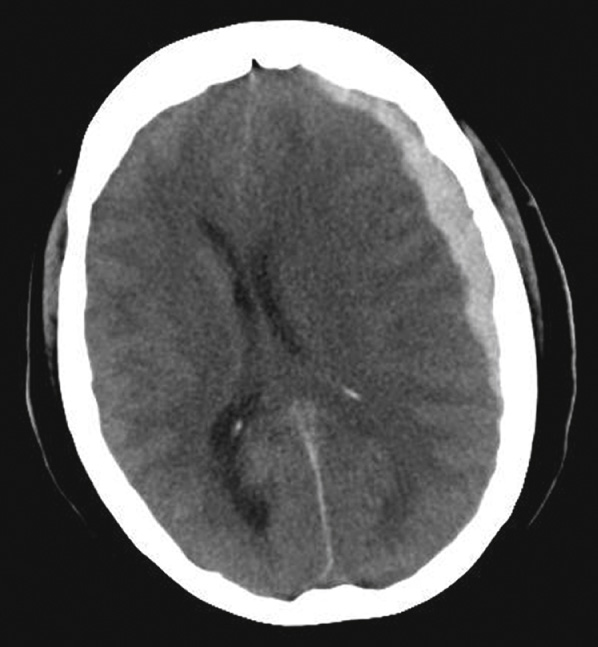
| Extradural haematoma | Subdural haematoma | |
|---|---|---|
| Location | Between the skull and dura mater | Between the dura and arachnoid mater |
| Cause | Trauma (fracture) | Tear of cortical bridging veins |
| Acute shape | Lenticular biconvex | Crescentic concave |
| Chronic shape | Crescentic | Elliptical |
| Crosses suture lines | No | Yes |
| Crosses a dural reflection | Yes | No |
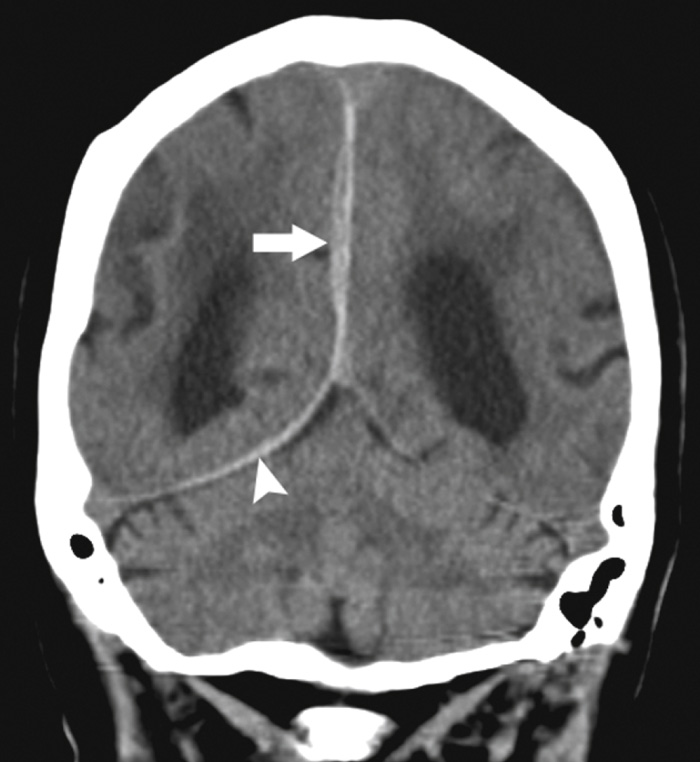
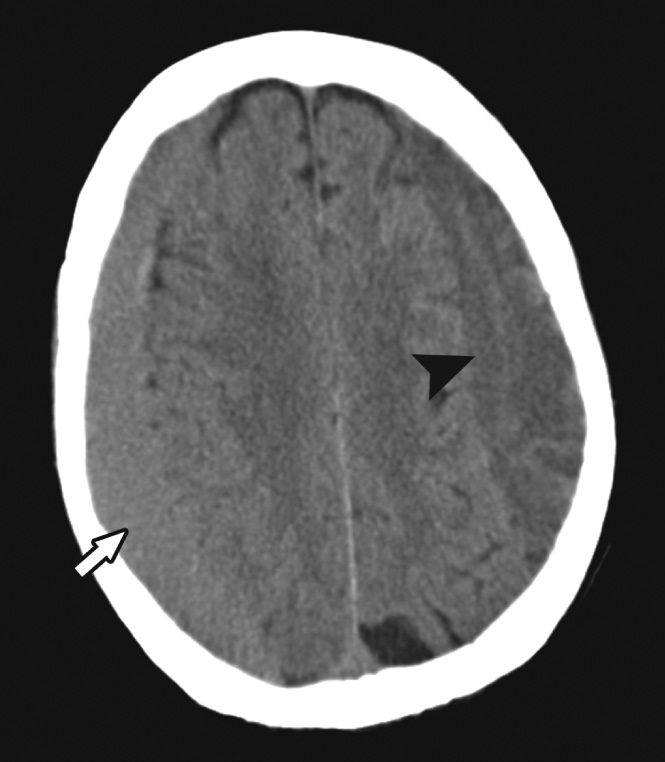
Traumatic bleeding between the cranial vault and dura mater
This is often associated with a skull fracture, which is often a fracture of the squamous part of the temporal bone (with an associated injury to the middle meningeal artery)
A lenticular biconvex hyperdense area immediately beneath the skull vault which is convex towards both the brain and skull vault
As the dura mater tends to adhere to the skull, the haematoma will not cross any cranial sutures but may cross a dural reflection (e.g. the falx) ▸ the underlying brain is displaced but often appears intrinsically normal
The temporoparietal convexity is the commonest site (the haematoma often lies beneath a fractured squamous temporal bone)
Internal areas of low density may indicate continuing bleeding
Skull fractures: compared with vascular markings, skull fractures are straighter, more angulated, more radiolucent and do not have corticated margins
Compound fracture: a fracture passing through a sinus or air cell is a compound fracture
Depressed fracture: usually comminuted and compound ▸ risk of post-traumatic epilepsy
Leptomeningeal cyst: the dura mater underlying a linear fracture is torn – exposure of the remodelling bone to CSF pulsations results in progressive fracture line widening
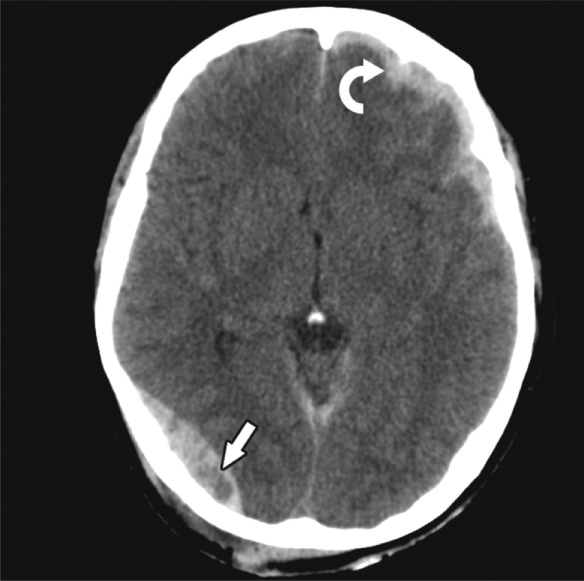
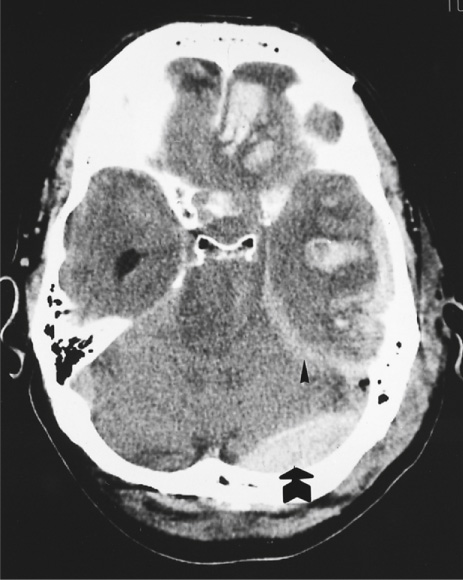
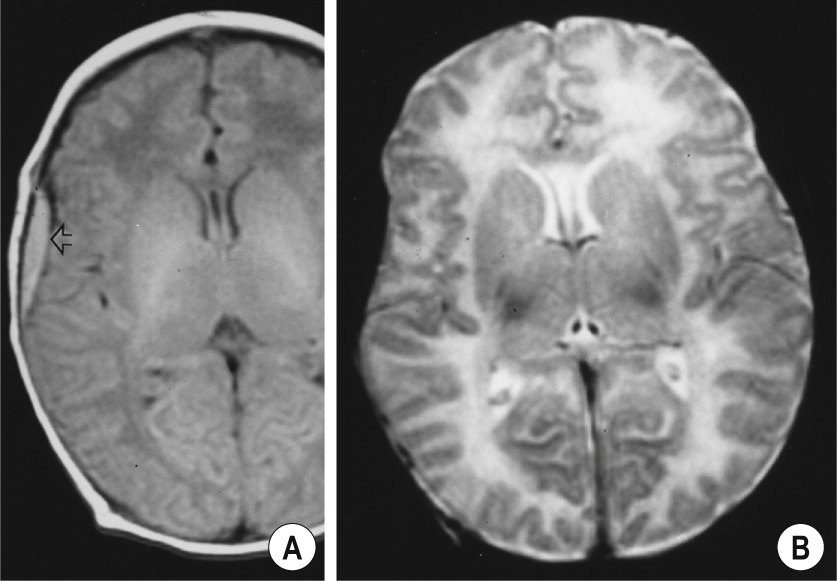
This includes cerebral contusions and cortical lacerations which are usually quite extensive
The injury mechanism is brain rotation with respect to the skull – it typically involves the inferior frontal lobes and the anterior temporal lobes as the sphenoid ridges and the anterior cranial fossae have irregular margins adjacent to the brain surface
‘Contrecoup’ contusion: cerebral damage lying diametrically opposite the site of impact (as defined by the skull fracture and scalp haematoma)
This is often normal ▸ there can be superficial low-density areas with a mild-to-moderate mass effect – these tend to increase in the initial period and subsequently contract into a region of focal atrophy (± cavitation) ▸ small hyperdense haemorrhages can be present within the early stages
Acute phase: mixed SI lesions ▸ chronic phase: contraction to regions of persistent (and mainly cortical) cerebral damage
These are less common but have a worse prognosis ▸ they occur more commonly in high-speed accidents
The injury mechanism is the result of differential rates of rotational acceleration within the brain substance itself – this results in shearing forces damaging the axons and microvasculature
One may have to rely on so-called ‘marker’ lesions – these represent small multifocal areas of microvascular damage (with haemorrhage or infarction) and are a reliable guide to the presence of DAI but not its extent
Characteristic sites: the high parasagittal cerebral white matter ▸ the corona radiata ▸ the posterior corpus callosum ▸ the subcortical white matter
The lesions are not usually visible ▸ there may be hypodense foci (oedema) or hyperdense foci (petechial haemorrhages)
This is more sensitive (even if a lesion is not haemorrhagic)
T2WI: multifocal areas of high SI
T2* imaging: this is more sensitive still (even long after the event) ▸ it will demonstrate small dark patches of haemosiderin with characteristically normal surrounding brain
This describes larger haemorrhages located within the basal ganglia and elsewhere ▸ they result from a more severe vascular component of the shearing injury and are associated with loss of consciousness at the time of injury
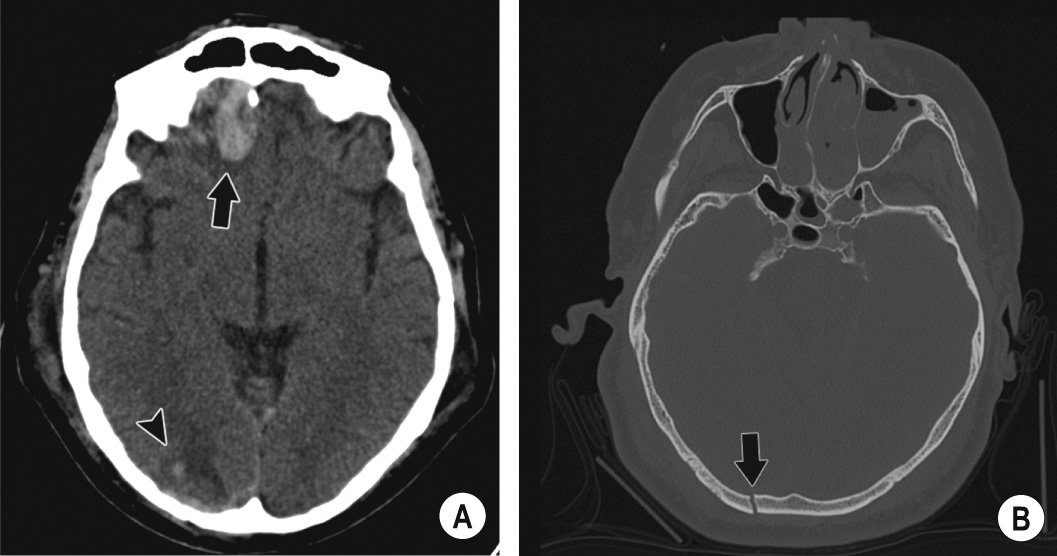
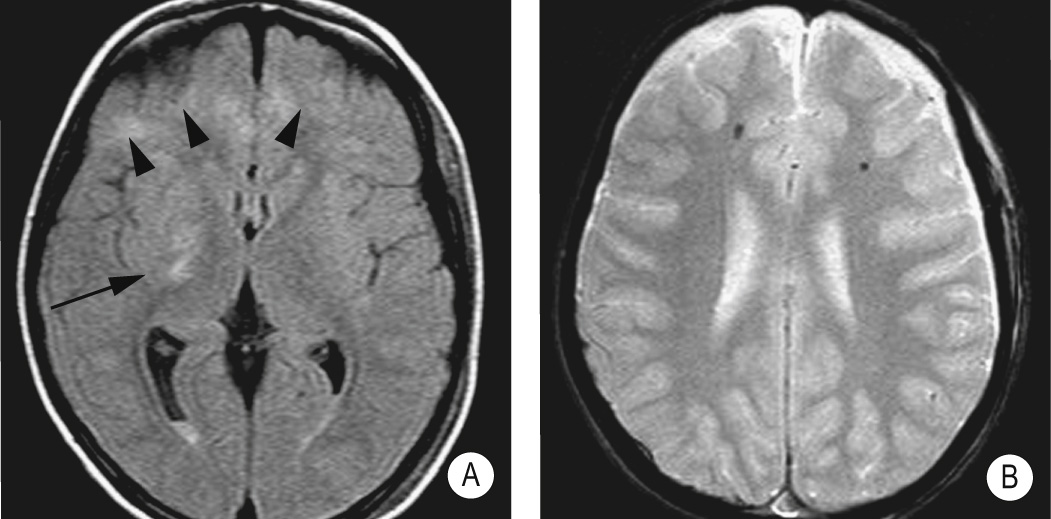
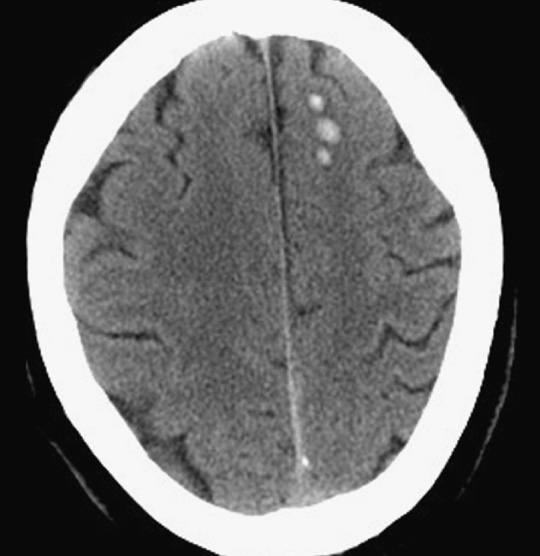

Diffuse cerebral swelling occurring 2–3 days after a major head injury ▸ it is caused by an increased cerebral blood volume as a result of abnormal cerebrovascular autoregulation and is a potent cause of raised intracranial pressure
It can be difficult to detect on imaging alone ▸ there may be effacement of the sulci and cisterns with loss of the grey/white matter interface
Herniation of brain from one compartment to another
Causes: intracranial haemorrhage ▸ brain tumours ▸ cerebral oedema following a stroke or anoxic injury
Displacement and impingement of the cingulate gyrus underneath the falx ▸ compression of the ipsilateral lateral ventricle and obstruction of the foramen of Monro with dilatation of the contralateral ventricle ▸ associated with anterior cerebral arterial infarcts
Herniation of the medial temporal lobe through the incisura
Descending: the uncus is initially displaced medially and occupies the ipsilateral suprasellar cistern (‘uncal’ herniation) ▸ eventually the whole medial temporal lobe is displaced through the incisura
CT/MRI Enlarged ipsilateral and effaced contralateral ambient cisterns ▸ compression of the ipsilateral cerebral peduncle ▸ compression of the contralateral peduncle against the tentorium with ipsilateral motor weakness (a false localizing sign)
Kernohan's notch: brainstem compression against the contralateral tentorium
Duret haemorrhage: due to anterior midbrain compression against the contralateral tentorium
Bilateral mass effect : this can cause bilateral descending herniation with compression of the posterior cerebral artery and oculomotor nerve
Ascending: less common and due to a mass effect within the posterior fossa causing superior displacement of the cerebellum and brainstem through the incisura ▸ associated hydrocephalus due to an obstructed cerebral aqueduct
Downward displacement of the cerebellar tonsils through the foramen magnum and into the spinal canal (>5 mm below the foramen is abnormal) ▸ there can be a ‘peg-like’ configuration to the tonsils ▸ an obstructive hydrocephalus can result from compression of the 4 th ventricle
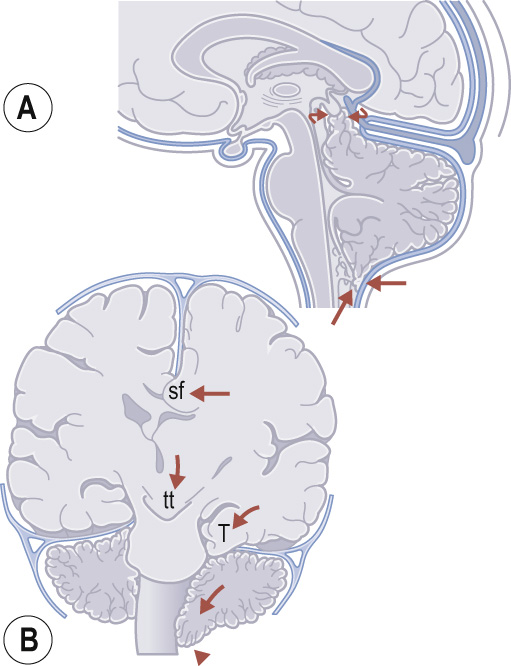
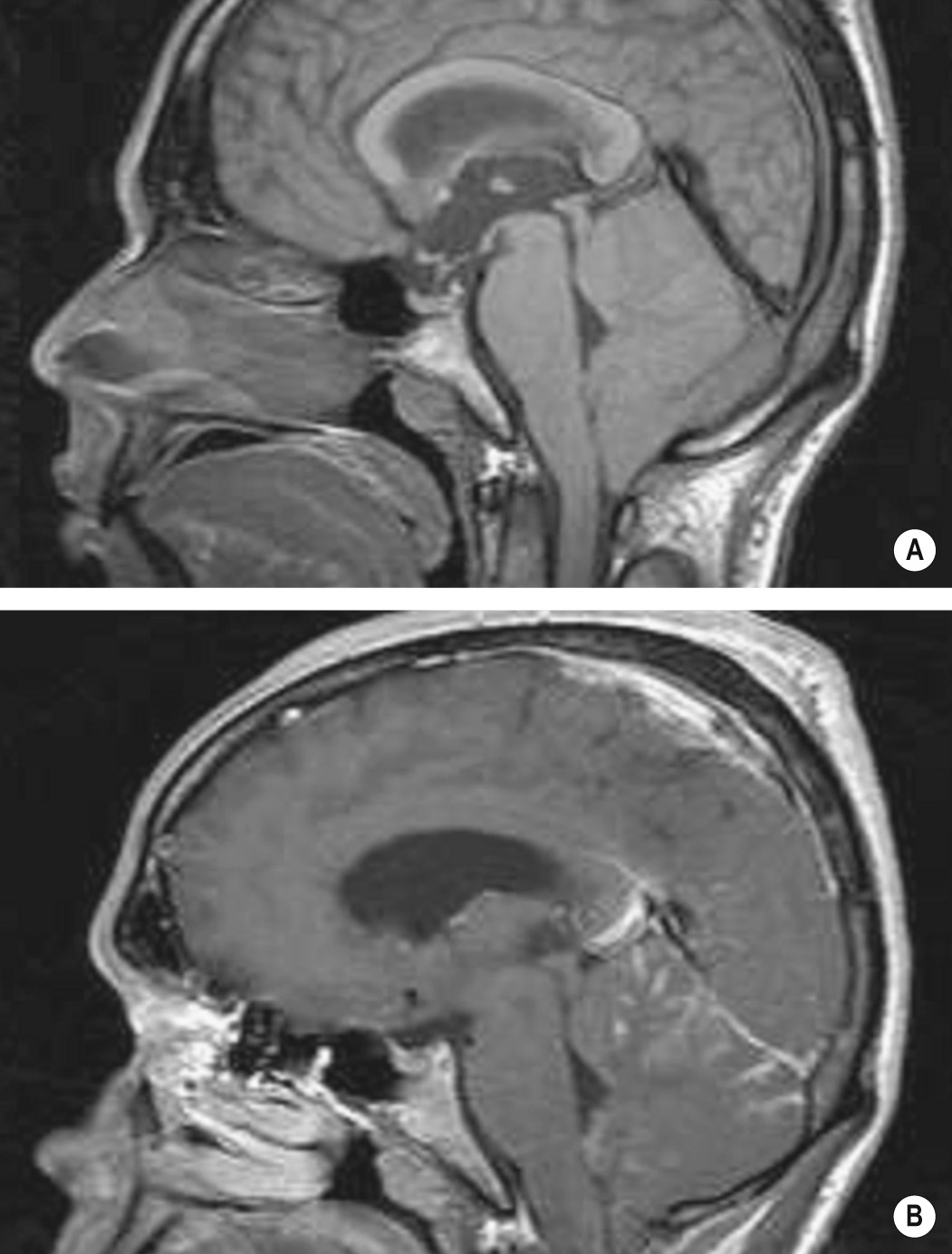
Become a Clinical Tree membership for Full access and enjoy Unlimited articles
If you are a member. Log in here